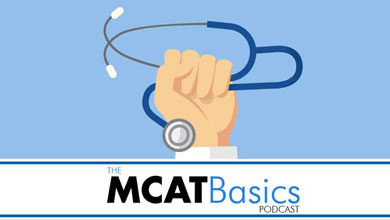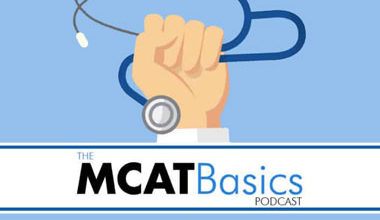Sam Smith covers fatty acid catabolism, including lipolysis and beta oxidation, fatty acid synthesis, protein catabolism, and protein anabolism.
- [01:32] Fatty Acid Catabolism
- [08:02] Lipolysis
- [10:12] Beta Oxidation
- [21:34] Fatty Acid Synthesis
- [26:34] Protein Catabolism
- [32:49] Protein Anabolism
Fat Catabolism
Most of the fat that we consume are triglycerides, with some cholesterol. Fat catabolism, or the breakdown of fat begins in the mouth with the enzyme salivary lipase. As the fatty acids travel to the stomach, the short-chain fatty acids — for example propionate and butyrate — are absorbed via simple diffusion in the stomach and small intestine.
In the small intestine long-chain fatty acids are emulsified by bile and pancreatic lipase breaks the triglyceride down into two fatty acids and a monoglyceride molecule. The fatty acid molecules maintain an association with the bile salts, and form micelles. The micelles, free fatty acids, and monoglycerides, are transported into the enterocyte (intestinal epithelial cell). Triglycerides are resynthesized in the enterocyte and packaged into chylomicrons. The chylomicrons are transported via the lymphatic system to the liver, lipoproteins, muscles, adipose tissue, etc.
Lipolysis
Once fat is transported to cells, it can either be stored for later use, or used to make ATP in beta oxidation. Triglycerides are stored in adipocytes. Hormones such as glucagon and epinephrine induce lipolysis. During lipolysis, triglycerides are broken down into three fatty acids and glycerol and released into the blood. Glycerol is blood-soluble and feeds into the glycolysis pathway. The long chain fatty acids are hydrophobic and require a carrier (i.e. albumin), to be transported to cells. There, they can be used for beta oxidation.
Beta Oxidation
Overview
Dietary fat — transported in LDL or chylomicrons to cells throughout the body — can be used to synthesize ATP in cells via beta oxidation. Beta oxidation begins in the cytoplasm of the cell. The fatty acid molecule is activated by the CoA group. An enzyme, acyl-CoA synthetase catalyzes the combination of the fatty acid molecule and the CoA to form acyl-CoA.
The Carnitine Shuttle
The acyl-CoA relies on the carnitine shuttle to be transported into the mitochondria: A mitochondrial membrane protein, carnitine palmitoyltransferase-1 (CPT-1) replaces the CoA group on acyl-CoA with the carnitine group. The acyl-carnitine passes halfway, but in order to enter the mitochondrial matrix, another protein, on the inner mitochondrial membrane, carnitine-acylcarnitine translocase shuttles the acyl-carnitine into the mitochondrial matrix, where it is converted back into acyl-CoA.
Beta Oxidation Reaction
Once in the mitochondrial matrix, the acyl-CoA is cut into a series of two-carbon molecules. A CoA is added to each of the carbons, to yield acetyl-CoA. Acetyl-CoA is fed into the Krebs cycle and can yield many ATP. The beta oxidation reaction involves four primary steps i.e. dehydrogenation, dehydration, dehydrogenation, and cleavage.
Beta Oxidation Energy Yield
Let us consider the example of palmitic acid. Palmitic acid is 16 carbons long, which means that we can get 8 acetyl-CoA molecules from it, after slicing it (performing beta oxidation) 7 times. We need two ATP molecules to activate a fatty acid. During each round of beta oxidation, we yield 1 NADH, 1 FADH2, and 1 acetyl-CoA. This means that from one palmitic acid molecule, we get 7 NADH, 7 FADH2, and 8 acetyl-CoA. Each NADH produces 2.5 ATP, each FADH2 produces 1.5 ATP. And each acetyl-CoA produces 12 ATP. So, from one palmitic acid molecule, we get 122 ATP. Compared to glucose molecules, which produces 30-32 ATP each, fats produce more energy per gram.
Beta Oxidation Weird Cases
Saturated and unsaturated fatty acids handle beta oxidation slightly differently. Unsaturated fatty acids that have an even number of double bonds require both isomerase and reductase to convert the fatty acid into one that can enter beta oxidation. Unsaturated fatty acids that have an odd number of double bonds require only isomerase to do this conversion. In addition, unsaturated fatty acids produce fewer high energy carrying molecules because if you have a single double bond, you lose an FADH, and if you have two double bonds, then you lose both an FADH2 and an NADH.
Odd chain fatty acids are fatty acids that contain an odd number of carbons. For example, pentadecanoic acid contains 15 carbons. They are fairly rare compared to even chain fatty acids. In terms of beta oxidation of saturated odd chain fatty acids, it occurs almost identically to even chain fatty acids. But the final product is propionyl-CoA which is converted to succinyl-CoA via a three-step process. Succinyl-CoA is an intermediate in the citric acid cycle, or the Krebs cycle, and can be used to produce ATP.
Fatty Acid Synthesis
Fatty acid synthesis is essentially the opposite of beta oxidation, and occurs in the cytoplasm. When acetyl-CoA builds up in the mitochondria, then it is transported via the citrate shuttle out into the cytoplasm. Acetyl-CoA combines with oxaloacetate to form citrate. Citrate can exit the mitochondria into the cytoplasm, citrate lyase converts the citrate back into oxaloacetate and acetyl-CoA.
In the cytoplasm, acetyl-CoA carboxylase adds CO2 to acetyl-CoA to produce malonyl-CoA. This activates the acetyl-CoA so that fatty acid synthesis can begin. Next, the fatty acid synthase enzyme combines malonyl-CoA and another acetyl-CoA molecule, repeating this until we produce palmitic acid. This process requires 8 Acetyl-CoA, 7 ATP, and 14 NADPH. The synthesized fatty acid can be combined with glycerol to produce a triglyceride for storage in adipocytes.
Note that excess glucose can also be converted into acetyl-CoA for storage in adipocytes as fat.
Acetyl-CoA can be used to synthesize fatty acids, but they can also be used to create ketone bodies. There are two important ketone bodies, acetoacetate and beta-hydroxybutyrate. Ketone bodies are often released during periods of prolonged starvation. However, these ketone bodies can also be used to produce energy in different cells. The brain uses lots of ketone bodies.
Protein Catabolism
The low pH in the stomach helps to denature proteins. Pepsin in the stomach’s gastric juice breaks protein down into oligopeptide fragments. When the stomach juice goes into the small intestine, protein is further broken down by pancreatic peptidases like trypsin and carboxypeptidase. These enzymes cleave the oligopeptides into even smaller fragments, like tri-oligopeptides and di-oligopeptides, and free amino acids. Small peptide fragments and amino acids are absorbed into the enterocytes of the small intestine, and make their way into the bloodstream to cells throughout the body.
In the cells, the small peptide fragments are broken down into individual amino acids by proteasomes in the cytoplasm of the cell. These free amino acids can either be further broken down or used to build more proteins.
The first step in amino acid catabolism is deamination — the removal of the amino group from the amino acid. The amino group of many amino acids is transferred to alpha ketoglutarate to make glutamine which is then deaminated to yield the free ammonium ion NH4+. The ammonium ion is eventually converted into urea — via the urea cycle — and excreted in urine. Unlike carbohydrates and fats, proteins are not stored in the body for later use. In high concentrations, nitrogen would be toxic to humans.
After deamination, the remaining part of the amino acid is used in gluconeogenesis, ketogenesis, or both. You can remember the amino acids that can be used for gluconeogenesis, ketogenesis, and both, by referring to this diagram. Note the mnemonic “Triple T Intellectual Property” to remember the five amino acids that can be used in both gluconeogenesis and ketogenesis (TTT IP – Threonine, Tryptophan, Tyrosine, Isoleucine, and Phenylalanine). Amino acids can also be used in other biosynthetic pathways, such as for the production of serotonin.
Protein Anabolism
The human body produces 3 grams of proteins per kilogram of body weight per day. According to Sam’s calculations he produces approximately a half pound of proteins per day. Protein synthesis— the transcription and translation process — has been reviewed many times, and will not be covered in detail here. However, you should know how amino acids from our diet are incorporated into proteins built by the cell. Free amino acids need to be conjugated to their right tRNA or transfer RNA in order to be incorporated into a protein. The conjugation reaction is catalyzed by aminoacyl tRNA synthetase. These enzymes not only attach amino acids to the correct tRNA, but they can also check the work of other aminoacyl tRNA synthetases.
For comments or concerns please email me: MCATpodcast@medschoolcoach.com

